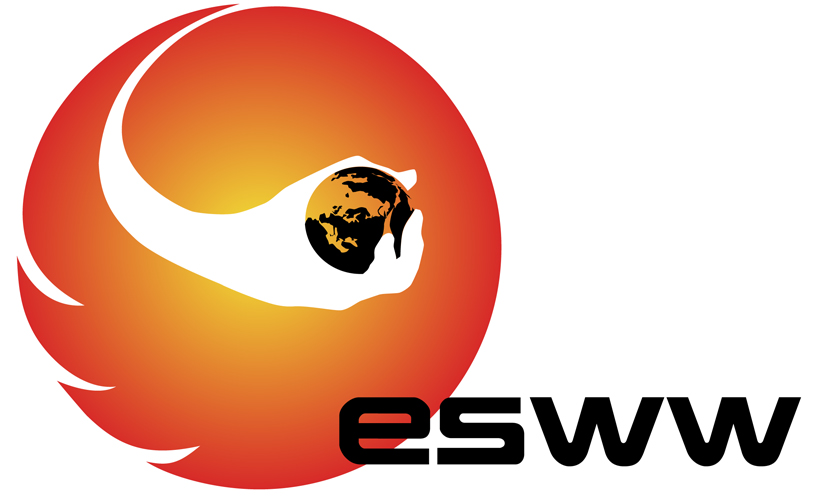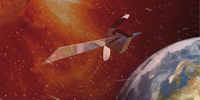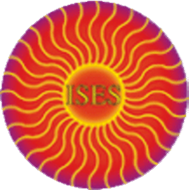
15-19 November, 2010 - Brugge, Belgium
Main Sessions
Each session will be divided into oral and poster sessions with plenty of time devoted to discussion. Contributed papers are welcome to each of the 5 sessions. The oral presentations will cover a range of scientific and applications related themes and will consist of both invited and contributed papers. Service user contributions are welcome and encouraged.
Link to the Sessions
Oral: Session 1 - Session 2 - Session 3 - Session 4 - Session 5
Posters: Session 1 - Session 2 - Session 3 - Session 4 - Session 5
Session description
1 - SSA Space Weather in Support of European Critical Infrastructure
This session has for objectives to give an overview of the Space Weather element of the European Space Situational Awareness undertaking, the way the ESA programme aims at the development of an operational system intended to meet user requirements, and the related R&D activities especially sponsored by ESA and the EC FP7. This session is also a venue for the presentation of planned or already initiated developments by European consortia.
2 - Spacecraft Environments and Effects
In this session emphasis is being placed on presenting and discussing spacecraft effects, especially those due to space radiations and how the satellites are affected. Session 2 includes invited and contributed talks from groups who are concerned with space weather radiation and plasma effects, and which develop services and tools to address such problems. In the context of the ESA SSA programme and the EU FP7 actions, space weather needs and developments are gaining a considerably higher profile in Europe.
3 - Tracking Heliospheric Phenomena: New Observing and Analysis Strategies
The session will start with a number of review talks relating to newly available and future data sources (for example, SDO/AIA). Also new ground-based observations strategies to track heliospheric phenomena will be considered. These include interplanetary scintillation techniques, radio burst measurements, etc. We note that essential in tracking heliospheric phenomena are space-based coronagraphs. Will we still have a coronagraph in space in two years from now? Potential talks here could be centred around the future of LASCO, SECCHI, PROBA3 or perhaps future Indian, Chinese or Korean coronagraphs Finally also in-situ observations are important to track the heliospheric phenomena. What is the future of ACE For any of the above candidate topics, we will ask the speakers to see their data set as an element in the bigger picture: how is their data complementary to others, what is the strategy to combine these for new emerging observing strategies? The second part of the session will build upon this latter aspect. Once we have combined data sets, we must address the question of manageable visualization and analysis. Given the massive amounts of data produced by e.g. SDO, this is non-trivial question. We need Virtual Observatories, image processing tools and sophisticated algorithms to identify the significant aspects of the observations - searching for science pearls in a sea of science data. Advanced visualization tools are required to show combined data sets from different perspectives throughout the heliosphere. Also specific new ideas on how heliospheric phenomena (eg evolution of sun-grazing comets) can be tracked could be welcome in this part of the session.
4 - Space Weather Products and Services
This session is focussing on the traditional and newly emerging operational services for different groups of users. Because the space weather is fast growing area with the increasing demand on services, this session delivers an annual update on what has been developed and can be regarded as operational as well as what products and services were recently updated. It includes updated data services as well as new dedicated specific models, forecasts and real-time monitoring products of the operational status. The oral programme will be a mixture of invited and contributed presentations. The session also welcomes contributions concerning services addressed to the research community based on the on-line implementation of space weather data and models. Service providers and developers as well as service users are encouraged to submit contributions. Service and products developers should address the validation and implementation issues, possibilities and needs for the service to become continuously operational. Service and products users should describe how they use the service(s) and integrate them into their own application, as well as an assessment of services (current performance and suggestions for upgrades and developments) as feedback to the service developers.
5 - Space Weather Models: from Research to Applications
'Transitioning from scientific models to applied models and applications is at the heart of Space Weather'. Session 5 offers spaces where to learn about potential or operative applications derived from models, and as contact point where to promote synergies between scientific and applied groups and companies.
| Session 1 | SSA Space Weather in Support of European Critical Infrastructure |
A. Hilgers (ESA) M. Ljungqvist (EC) |
| Session 2 | Spacecraft Environments and Effects oral-poster |
E. Daly (ESA) V. Pierrard (BISA, CSR) |
| Session 3 | Tracking Heliospheric Phenomena: New Observing and Analysis Strategies oral-poster |
D. Berghmans (ROB) R. Walsh (Univ Lancashire) |
| Session 4 | Space Weather Products and Services oral-poster |
C. Jacquey (CESR) L. Trichtchenko (N.R. Canada) |
| Session 5 | Space Weather Models: from Research to Applications oral-poster |
B. Sanahuja (Univ Barcelona) S. Vennerstroem (DTU Space) |
Each session will be divided into oral and poster sessions with plenty of time devoted to discussion. Contributed papers are welcome to each of the 5 sessions. The oral presentations will cover a range of scientific and applications related themes and will consist of both invited and contributed papers. Service user contributions are welcome and encouraged.
Link to the Sessions
Oral: Session 1 - Session 2 - Session 3 - Session 4 - Session 5
Posters: Session 1 - Session 2 - Session 3 - Session 4 - Session 5
Session description
1 - SSA Space Weather in Support of European Critical Infrastructure
This session has for objectives to give an overview of the Space Weather element of the European Space Situational Awareness undertaking, the way the ESA programme aims at the development of an operational system intended to meet user requirements, and the related R&D activities especially sponsored by ESA and the EC FP7. This session is also a venue for the presentation of planned or already initiated developments by European consortia.
2 - Spacecraft Environments and Effects
In this session emphasis is being placed on presenting and discussing spacecraft effects, especially those due to space radiations and how the satellites are affected. Session 2 includes invited and contributed talks from groups who are concerned with space weather radiation and plasma effects, and which develop services and tools to address such problems. In the context of the ESA SSA programme and the EU FP7 actions, space weather needs and developments are gaining a considerably higher profile in Europe.
3 - Tracking Heliospheric Phenomena: New Observing and Analysis Strategies
The session will start with a number of review talks relating to newly available and future data sources (for example, SDO/AIA). Also new ground-based observations strategies to track heliospheric phenomena will be considered. These include interplanetary scintillation techniques, radio burst measurements, etc. We note that essential in tracking heliospheric phenomena are space-based coronagraphs. Will we still have a coronagraph in space in two years from now? Potential talks here could be centred around the future of LASCO, SECCHI, PROBA3 or perhaps future Indian, Chinese or Korean coronagraphs Finally also in-situ observations are important to track the heliospheric phenomena. What is the future of ACE For any of the above candidate topics, we will ask the speakers to see their data set as an element in the bigger picture: how is their data complementary to others, what is the strategy to combine these for new emerging observing strategies? The second part of the session will build upon this latter aspect. Once we have combined data sets, we must address the question of manageable visualization and analysis. Given the massive amounts of data produced by e.g. SDO, this is non-trivial question. We need Virtual Observatories, image processing tools and sophisticated algorithms to identify the significant aspects of the observations - searching for science pearls in a sea of science data. Advanced visualization tools are required to show combined data sets from different perspectives throughout the heliosphere. Also specific new ideas on how heliospheric phenomena (eg evolution of sun-grazing comets) can be tracked could be welcome in this part of the session.
4 - Space Weather Products and Services
This session is focussing on the traditional and newly emerging operational services for different groups of users. Because the space weather is fast growing area with the increasing demand on services, this session delivers an annual update on what has been developed and can be regarded as operational as well as what products and services were recently updated. It includes updated data services as well as new dedicated specific models, forecasts and real-time monitoring products of the operational status. The oral programme will be a mixture of invited and contributed presentations. The session also welcomes contributions concerning services addressed to the research community based on the on-line implementation of space weather data and models. Service providers and developers as well as service users are encouraged to submit contributions. Service and products developers should address the validation and implementation issues, possibilities and needs for the service to become continuously operational. Service and products users should describe how they use the service(s) and integrate them into their own application, as well as an assessment of services (current performance and suggestions for upgrades and developments) as feedback to the service developers.
5 - Space Weather Models: from Research to Applications
'Transitioning from scientific models to applied models and applications is at the heart of Space Weather'. Session 5 offers spaces where to learn about potential or operative applications derived from models, and as contact point where to promote synergies between scientific and applied groups and companies.







